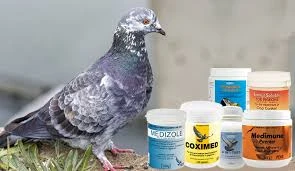
Ноя . 18, 2024 09:33 Back to list
Understanding Pasteurellosis in Swine Production and Its Impact on Health Management
Pasteurellosis in Swine Factories Understanding and Managing the Threat
Pasteurellosis is a significant bacterial disease affecting swine, caused primarily by the bacterium *Pasteurella multocida*. This pathogen can lead to severe respiratory illnesses and other systemic infections in pigs, posing a serious threat to swine production in factories. Understanding the disease’s epidemiology, clinical signs, and management strategies is crucial for swine producers aiming to maintain healthy herds and ensure the sustainability of their operations.
Epidemiology of Pasteurellosis in Swine
*Pasteurella multocida* is a commensal organism found in the upper respiratory tracts of healthy pigs. However, stressors such as overcrowding, poor ventilation, and viral infections can predispose swine to infections, leading to outbreaks of pasteurellosis. The disease is commonly observed in growing and finishing pigs, although it can affect animals of any age.
The transmission of *Pasteurella multocida* occurs via direct contact between pigs or indirectly through contaminated equipment, feed, or water sources. Environmental factors, such as humidity and temperature fluctuations, can also influence the incidence of the disease.
Clinical Signs and Diagnosis
Infected pigs typically exhibit respiratory symptoms, including coughing, nasal discharge, and difficulty breathing. Other signs may include fever, lethargy, and a decline in feed intake. In more severe cases, pasteurellosis can lead to pleuropneumonia, which presents with severe respiratory distress and can be fatal.
Veterinarians diagnose pasteurellosis based on clinical signs, herd history, and laboratory tests, such as bacterial cultures and molecular diagnostics. Early detection is critical for effective management and treatment.
Management and Control Strategies
pasteurellosis in swine factories

Preventing pasteurellosis in swine factories requires a comprehensive approach that includes biosecurity measures, vaccination, and proper management practices.
1. Biosecurity Implementing strict biosecurity protocols is essential to reduce the risk of pathogen introduction and spread. This includes controlling access to pig housing, sanitizing equipment, and managing animal movement on and off the farm.
2. Vaccination Vaccines against *Pasteurella multocida* are available and can significantly reduce the incidence of disease. Vaccination programs should be tailored based on specific herd needs, previous disease history, and local epidemiological data.
3. Environmental Management Maintaining optimal housing conditions is crucial. This includes ensuring adequate ventilation, controlling temperature and humidity levels, and reducing overcrowding. Regular cleaning and disinfection of facilities can help minimize the presence of pathogens.
4. Nutritional Management Providing a balanced diet that meets the nutritional needs of swine can enhance their immune response, making them less susceptible to infections. Incorporating vitamins, minerals, and probiotics can also contribute to overall herd health.
5. Monitoring and Early Intervention Regular health monitoring of pigs allows for the early detection of disease signs, enabling prompt treatment. Employing a veterinary health plan can facilitate regular health checks and vaccination schedules.
Conclusion
Pasteurellosis remains a critical concern in swine production, significantly impacting animal health and economic viability. By understanding the disease's dynamics and implementing proactive management strategies, swine producers can effectively mitigate the risks associated with *Pasteurella multocida*. This integrated approach not only enhances herd health but also contributes to the sustainability of the swine industry, ensuring a steady supply of healthy pork for consumers.
-
China Salivation AI with GPT-4 Turbo Features
NewsAug.01,2025
-
Epic Sepsis Factories: AI-Driven Detection with GPT-4 Turbo
NewsJul.31,2025
-
Acute Salpingitis and Oophoritis AI Factory
NewsJul.31,2025
-
Premium China Bacillus Subtilis Supplier & Factory Solutions
NewsJul.30,2025
-
Premium Avermectin Supplier in China | Custom Solutions Available
NewsJul.29,2025
-
China Bacillus Subtilis Supplier - Custom Factory Solutions
NewsJul.29,2025




